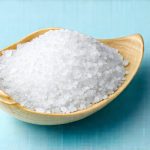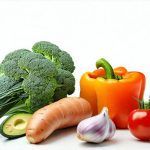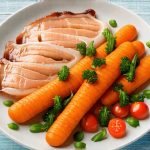Constipation and digestive discomfort are incredibly common experiences, impacting quality of life for millions. Many people immediately think of increasing fiber intake as the solution, but it’s often not that simple. A sudden jump in fiber consumption can paradoxically worsen symptoms, leading to bloating, gas, and even nausea. The key isn’t just about how much fiber you consume, but rather the type of fiber, how quickly you increase your intake, and how well it’s integrated into a balanced diet that supports overall digestive health. This article will explore practical meal plans designed to promote regularity without triggering unpleasant side effects, focusing on gentle approaches and mindful food choices.
Understanding the intricacies of dietary fiber is crucial. Fiber isn’t a single entity; it exists in two main forms – soluble and insoluble – each playing a distinct role in digestive function. Insoluble fiber adds bulk to stool, accelerating its passage through the digestive tract, while soluble fiber dissolves in water, forming a gel-like substance that softens stool and can help regulate blood sugar and cholesterol levels. Many foods contain both types, but emphasizing a balance between them is vital for comfortable regularity. Furthermore, hydration is paramount; fiber absorbs water, so inadequate fluid intake can negate its benefits and exacerbate constipation. We’ll focus on strategies to incorporate these elements into sustainable meal plans that prioritize comfort and consistent digestive health rather than drastic overnight changes. If you are experiencing nausea alongside dietary changes, consider exploring managing nausea during a diet overhaul.
Gentle Fiber Integration: Meal Plan Basics
A successful high-fiber plan isn’t about an abrupt overhaul of your diet, but a gradual increase in fiber intake alongside increased hydration. Start small – perhaps adding one serving of a fiber-rich food each day – and monitor how your body responds. Pay attention to any changes in bowel movements, bloating levels, or general comfort. If you experience discomfort, reduce the amount of fiber and/or increase your water intake before continuing to add more. Prioritize whole foods over processed fiber supplements whenever possible; they offer a wider range of nutrients and contribute to overall health beyond just digestive function. A typical daily goal for adults is around 25-35 grams of fiber, but this can vary based on individual needs and tolerance levels. Identifying foods that trigger bloating is also important to consider when adjusting your diet.
The foundation of these meal plans will be built upon easily digestible foods that are naturally high in fiber. Think cooked vegetables (rather than raw), fruits with the skin removed if necessary, whole grains like oats or quinoa, and lean protein sources. Avoiding excessive amounts of gas-producing foods like beans or cruciferous vegetables initially can also help minimize discomfort during the adaptation phase. Incorporating probiotics through fermented foods (yogurt, kefir, sauerkraut) or supplements may further support digestive health by fostering a healthy gut microbiome. Remember to spread your fiber intake throughout the day rather than consuming a large amount in one sitting; this eases the digestive process and reduces the likelihood of bloating. Knowing practical methods to track food triggers can be incredibly helpful during this process.
Finally, mindful eating is essential. Take time to chew your food thoroughly – this aids digestion and allows you to better assess your body’s signals of fullness. Avoid eating quickly or while distracted, as these habits can lead to overeating and digestive discomfort. Listen to your body and adjust your intake based on how you feel; there’s no one-size-fits-all approach to fiber consumption.
Building Blocks for a Fiber-Rich Diet
The following are foundational food groups that should be consistently incorporated into your meal plan:
- Fruits (cooked or peeled as needed): Berries, bananas, applesauce, peaches, pears (peeled) – these provide soluble fiber and essential vitamins.
- Vegetables (cooked is often more digestible): Sweet potatoes, carrots, spinach, zucchini, butternut squash – excellent sources of both soluble and insoluble fiber. Steaming or roasting are preferable to raw consumption during initial integration.
- Whole Grains: Oatmeal, quinoa, brown rice, whole-wheat bread – provide sustained energy and contribute significantly to daily fiber intake. Choose minimally processed options whenever possible.
- Legumes (start with small portions): Lentils, chickpeas, black beans – incredibly nutritious but can cause gas in some individuals; begin with small servings and gradually increase tolerance.
- Nuts & Seeds: Chia seeds, flaxseeds, almonds, walnuts – offer healthy fats, protein, and fiber. Chia and flaxseed are particularly good sources of soluble fiber.
Hydration Strategies for Fiber Optimization
Fiber works optimally when paired with adequate hydration. Dehydration can counteract the benefits of increased fiber intake and lead to constipation. Here’s how to stay properly hydrated:
- Drink Water Regularly: Aim for at least 8 glasses (64 ounces) of water per day, but individual needs may vary based on activity level and climate.
- Incorporate Hydrating Foods: Fruits and vegetables with high water content (watermelon, cucumber, celery) can contribute to your daily fluid intake.
- Listen to Your Body: Pay attention to thirst cues and drink water before you feel thirsty.
- Avoid Excessive Caffeine & Alcohol: These beverages can have a dehydrating effect. Recognizing the impact of meal frequency on nausea is also important to keep in mind.
Sample Meal Plan – Gentle Start (Approximately 20-25 grams of fiber)
This plan is designed for someone beginning to increase their fiber intake, focusing on easily digestible foods and gentle introduction:
- Breakfast: Oatmeal (1/2 cup dry oats) with berries (1/4 cup) and a tablespoon of chia seeds.
- Lunch: Large salad with spinach, grilled chicken, sliced cucumber, carrots, and a light vinaigrette dressing. Side of quinoa (1/2 cup cooked).
- Dinner: Baked sweet potato topped with steamed broccoli and a small serving of lentils (1/4 cup).
- Snacks: Banana, handful of almonds, or yogurt with a tablespoon of ground flaxseed.
This plan should be maintained for several days to assess tolerance before gradually increasing fiber intake through larger portions or the addition of more fiber-rich foods. Remember consistency and mindful listening to your body are key. The goal is sustainable regularity, not a quick fix that leads to discomfort. If you find yourself needing to reintroduce trigger foods after a period of restriction, proceed with caution and follow established guidelines.


















